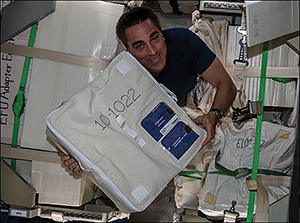Article contents
A method for space archaeology research: the International Space Station Archaeological Project
Published online by Cambridge University Press: 24 August 2021
Abstract

How does a ‘space culture’ emerge and evolve, and how can archaeologists study such a phenomenon? The International Space Station Archaeological Project seeks to analyse the social and cultural context of an assemblage relating to the human presence in space. Drawing on concepts from contemporary archaeology, the project pursues a unique perspective beyond sociological or ethnographical approaches. Semiotic analysis of material culture and proxemic analysis of embodied space can be achieved using NASA's archives of documentation, images, video and audio media. Here, the authors set out a method for the study of this evidence. Understanding how individuals and groups use material culture in space stations, from discrete objects to contextual relationships, promises to reveal intersections of identity, nationality and community.
- Type
- Method
- Information
- Copyright
- Copyright © The Author(s), 2021. Published by Cambridge University Press on behalf of Antiquity Publications Ltd.
References
- 8
- Cited by


